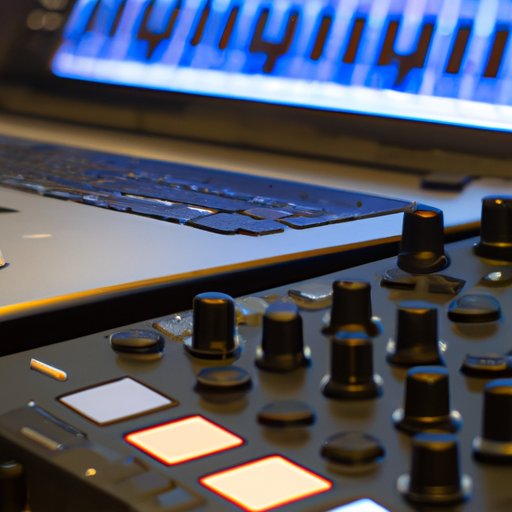How to Make Beats: A Step-by-Step Guide to Create Your Own Rhythm
Whether you’re an aspiring artist or producer, the ability to make beats is a crucial skill in the music industry. With the rise of DIY music production, it has never been easier to take control of your artistic vision and produce music from the comfort of your home. In this article, we will show you how to make beats step-by-step, offering tips and tricks, covering popular genres, interviewing industry experts, analyzing case studies, and much more.
Step-by-Step Guide to Making Beats
Before you start making beats, it’s essential to prep your equipment. You will need a computer, midi controller, and a Digital Audio Workstation (DAW) software to create beats. Choose a DAW software that is beginner-friendly and popular among beatmakers like Ableton, FL Studio, or Logic Pro. Next, you’ll need to choose a sound source – this could be a software synthesizer or sound library to access a wide range of sounds. Once you have your equipment ready, you can start creating beats.
The process starts with creating the rhythm of your track. You can either create a drum loop or start with a metronome. Once you have the rhythm, you can start adding instruments – like bassline, chords, and melody. The key to making beats is to create a groove that is catchy and memorable. Use editing tools to adjust your sound, cut samples, and pitch to make your beat unique.
Tips and Tricks for Beat-making
Layering sounds is one of the most useful techniques used by producers to add depth and complexity to their tracks. Experimenting with effects such as EQs, reverb, and delay can shape your sound and make it stand out. Swing is a technique used to create a natural groove in your beat, making it sound more like a live performance. You can also use automation to add variation to your drum patterns, effects, or other parameters.
Creating Beats for Popular Genres
Depending on the genre, beat-making techniques can differ significantly. For example, hip-hop beats have a steady rhythm with syncopated basslines and off-beat hi-hats, whereas trap beats have a slower tempo with 808 bass and minimal melodies. EDM beats feature a fast tempo with heavy drops and synth leads. By understanding the conventions of each genre, you can create more authentic and exciting beats.
Learning from Industry Experts
Interviewing producers and musicians is an excellent way to gain valuable insights and learn from the best. Top producers have years of experience and knowledge about making successful beats. They can provide you with tips on composing, mixing, and mastering tracks that stand out. Try reaching out to experts in the field and gain valuable insights to enhance your beatmaking skills.
Case Studies of Popular Beats
Music production is a collaborative process, and learning from other artists’ work can improve your craft. Analyzing popular tracks, dissecting their components, and understanding how they were created can provide you with a blueprint to make your beats. It helps you understand how basslines, melodies, rhythms and arrangements work together to create a cohesive and compelling track.
Choosing the Best Beat-making Software
Choosing the right software is crucial as it affects your workflow, production speed, and the type of music you make. Each software has its unique features and workflow. Take your time to choose the best software that fits your style and preference. By understanding the basics of each software, you can produce high-quality beats that live up to your expectations.
Get Creative and Experiment
Nothing beats originality, and that is precisely what creativity brings to the table. Don’t be afraid to try out new techniques, use found sounds, and sample to create unique tracks that stand out from the rest. Experiment by mixing genres, creating remixes, or adding live instrumentation to your beats. The more you experiment, the more exciting beats you can produce.
Conclusion
We hope this article gave you valuable insights into how to make beats. Remember, the beat-making process is a learning experience that requires patience and practice. Keep experimenting, fine-tuning, and listening to track produced by industry leaders, and you will soon find your unique style. By following the steps, tips, and tricks provided in this article, you can create high-quality beats that can compete with the best in the music industry.
